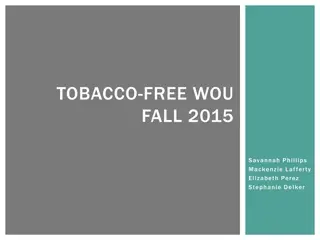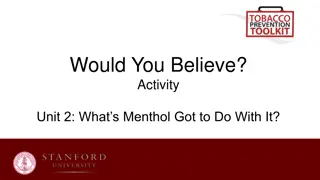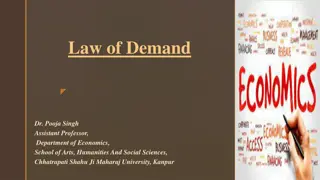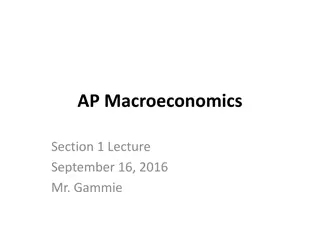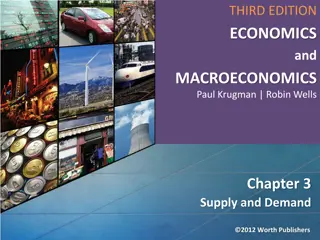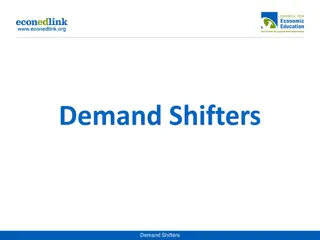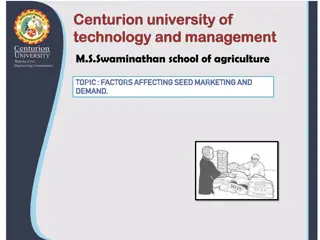Tracking the Influence of Tobacco Industry on Scientific Record: FCTC Demand Reduction Measures
Research by Heikki Hiilamo explores how the tobacco industry influences scientific records related to FCTC demand reduction measures. By examining FCTC implementation, tax provisions, smoke-free laws, and advertising bans, the study uncovers industry strategies to hinder tobacco control efforts.
Download Presentation

Please find below an Image/Link to download the presentation.
The content on the website is provided AS IS for your information and personal use only. It may not be sold, licensed, or shared on other websites without obtaining consent from the author. Download presentation by click this link. If you encounter any issues during the download, it is possible that the publisher has removed the file from their server.
E N D
Presentation Transcript
Tracking tobacco industry attempts to influence scientific record: evidence from research relating to FCTC demand reduction measures Heikki Hiilamo WHO FCTC Knowledge Hub on Surveillancen webinaar
5.3 Policymaking 6 Tax 8 Smokefree 9 Ingredients 11 Labels 13 Advertising 17 Agriculture 12 Education 14 Cessation 15 Smuggling 16 Youth 19/22, 20, 21, 23-25 Cooperate, Research, Report, Convene
5.3 Policymaking 9 Ingredients 6 Tax 8 Smokefree 11 Labels 17 Agriculture 13 Advertising 12 Education 14 Cessation 15 Smuggling 16 Youth 19/22, 20, 21, 23-25 Cooperate, Research, Report, Convene
Data and methods (1) In a series of sub-studies (1-6) we measured current status of FCTC implementation with WHO MPOWER data, which we considered more comprehensive and reliable than FCTC secretariat implementation data provided by Convention parties By utilizing internal tobacco industry documents we established pre- FCTC baseline
Research papers on FCTC implementation I/III Tax (1) Hiilamo H, Glantz S. Limited implementation of the framework convention on tobacco control's tobacco tax provision: global comparison. BMJ Open. 2018 Oct 2;8(10):e021340 Smokefree (2) Uang R, Hiilamo H, Glantz SA. Accelerated Adoption of Smoke-Free Laws After Ratification of the World Health Organization Framework Convention on Tobacco Control. Am J Public Health. 2016 Jan;106(1):166-71.
Research papers II/III Advertising (3) Hiilamo H, Glantz S. FCTC followed by accelerated implementation of tobacco advertising bans. Tob Control. 2017 Jul;26(4):428-433.
Research papers III/III Label (4) Hiilamo H, Crosbie E, Glantz SA. The evolution of health warning labels on cigarette packs: the role of precedents, and tobacco industry strategies to block diffusion. Tob Control. 2014 Jan;23(1):e2. (5) Sanders-Jackson AN, Song AV, Hiilamo H, Glantz SA. Effect of the Framework Convention on Tobacco Control and voluntary industry health warning labels on passage of mandated cigarette warning labels from 1965 to 2012: transition probability and event history analyses. Am J Public Health. 2013 Nov;103(11):2041-7. (6) Hiilamo H, Glantz SA. Implementation of effective cigarette health warning labels among low and middle income countries: state capacity, path- dependency and tobacco industry activity. Soc Sci Med. 2015 Jan;124:241-5.
Data and methods (2) Tobacco industry strategies to undermine tobacco control are studied using internal tobacco industry documents, main focus on Nordic countries Documents allow us to trace and analyze the various ways in which the tobacco companies have tried to communicate their views on the health issue and thereby influence regulation Previously secret tobacco industry documents available at http://legacy.library.ucsf.edu N.B. Research evidence on tobacco industry strategies dated back from pre-FCTC years
Research papers on tobacco industry strategies Hiilamo H, Glantz SA. Local Nordic tobacco interests collaborated with multinational companies to maintain a united front and undermine tobacco control policies. Tob Control. 2013 Mar;22(2):154-64 Hiilamo H, Kahl U, Lambe M. The Philip Morris Nordic journalist program: strategies, implementation and outcomes. Health Policy. 2009 Jan;89(1):84-96. Hiilamo H, Hirschhorn N. Tobacco industry documents from outside sources: new perspectives on industry strategies on local levels. Cent Eur J Public Health. 2006 Dec;14(4):175-9. Hiilamo H. Tobacco industry strategy to undermine tobacco control in Finland. Tob Control. 2003 Dec;12(4):414-23.
Nordic countries in tobacco control Nordic countries were early adopters of tobacco control policies The multinational tobacco companies recognised this fact and mobilised to oppose these policies, in part because of fear that they would set unfavourable precedents
Philip Morris, May 4, 1977 http://legacy.library.ucsf.edu/tid/vjc35e00
Commissioned research in the Nordic area by PM between 1987 and 1989 Aim Project Country NMA involvement Countering restrictions on marketing freedoms Juvenile smoking study Finland Norway Sweden Shared costs with PM, publicised results Re-establishing smokers self-esteem Workplace smoking attitudes Finland Norway Sweden Shared costs with PM, publicised results Acted as spokespersons Shared costs with PM, publicised results Social acceptance of smoking Indoor air quality studies Finland Norway Sweden Publicised results, shared costs, acted as spokespersons Publicised results Ensuring favourable taxation Cost-to-society studies Denmark Finland Publicised results, shared costs Commissioned study, shared costs with PM
Tobacco taxes Taxes are politically difficult to raise because tobacco companies fight tax increases Known tobacco industry strategies to undermine tobacco taxation include Commissioning research claiming economic benefits of tobacco Creating alliances,including with progressive organizations Lobbying ministries of finance with poor knowledge of public health and FCTC requirements Arguing tax increases drive illicit trade and hurt disadvantaged groups
Besques, J. Finland - Research Projects. Philip Morris. January 5, 1990. Access Date: July 24, 2001. Bates No.: 2048909355. In 1988, Amer-Tupakka hired the Business Research Centre (LTT) in Finland to draw up an account of the social costs of tobacco. PM wanted to make smoking look more inexpensive to society than the preliminary results showed. At first, the LTT was against amendments stating that "breaking away from existing literature, which is dominated by anti-smoking views, demands to some extent courage". After negotiations the LTT was ready to make amendments in exchange for an extra bonus.
An external file that holds a picture, illustration, etc. Object name is bmjopen-2017-021340f01.jpg
An external file that holds a picture, illustration, etc. Object name is bmjopen-2017-021340f02.jpg
Conclusions on tobacco taxes FCTC ratification has not been systematically followed regarding higher tobacco taxation. FCTC Article 6 does not stipulate specific tax rates Fragile countries are less likely to have high tobacco taxes Rapid rise in incomes undermines the effectiveness of tobacco taxes Guidelines for FCTC Article 6 implementation should assign definite targets for tobacco taxes and for the implementation of a tax escalator that gradually increases taxes to match the rising income levels
Smokefree Tobacco industry opposed fervently smokefree policies Long-standing scientific campaign to undermine evidence base on health hazards of second hand smoke (e.g. industry s International ETS Consultants Project) Nordic countries at the centre of tobacco industry actions
White coats Beginning in 1987, Covington and Burling, who managed SHS issues for the industry worldwide, arranged as a part of the a group of PM- sponsored outside scientists in the Nordic countries to act as ETS whitecoats Covington and Burling appointed Torbj rn Malmfors to lead the Expert-gruppen f r Riskbed mning av Inneluftens H lsorisker (EGIL) (an acronym for a group of specialist on health risks of indoor air in Swedish) between 1987 and 1992 Malmfors was screened by an American scientific consultant who reported to Covington and Burling that, he [Malmfors] does not believe that any adverse health effects [of SHS] have been shown
EGIL Malmfors quickly recruited about 10 medical doctors from Nordic countries into EGIL EGIL s members published peer-reviewed and popular articles criticising research findings on the dangers of SHS, attended NMA and PM media briefings and attended and monitored seminars sponsored by health organisations on issues such as workplace environment and risk perception EGIL members also consulted with tobacco companies on regulatory and scientific matters such as opposing a smoke-free law in Sweden, acted as a specialist group in contacts with regulatory authorities and carried out research to obscure the health hazards of SHS, such as indoor air quality in passenger cabins and public perception of various health risks
Poorly ventilated appartments are more hazardous to health than poor air quality in airplanes 21
An external file that holds a picture, illustration, etc. Object name is AJPH.2015.302872f1.jpg
Conclusions on smokefree policies The FCTC accelerated the adoption of smoke-free indoor workplace, restaurant, and bar laws, with the greatest effect in the years immediately following ratification of the convention The effect faded as time passed Need for a renewed effort by public health advocates to see a large number of countries had ratified the FCTC but had not come into compliance with its provisions requiring protection of people from exposure to secondhand smoke
TAPS The tobacco industry has a long history of undermining tobacco TAPS bans Tobacco industry has promoted voluntary agreements over legislation and sought loopholes to continue promoting tobacco products
HWWA study INFOTAB s Defence of Advertising Committee (DAC) was to produce material and programmes to enable the industry to defend the right to advertise cigarettes In 1980, DAC initiated the Scandinavian study on the effects of early advertising restrictions in Finland, Norway and Sweden DAC commissioned HWWA-Institute f r Wirtshaftsforschung in Hamburg to gather data on advertising restrictions and tobacco consumption from the Norwegian NMA, Tiedemanns, ST and Suomen Tupakka (BAT s Finnish subsidiary)
HWWA study HWWA concluded that by themselves advertising bans or restrictions had little, if any, effect on total consumption but that health campaigns and price increases decreased cigarette sales and that health campaigns were more effective when brand advertising was banned DAC members and the representatives of the Nordic industry were disappointed INFOTAB s Board of Directors allowed HWWA to finish the study but kept it for internal industry use without publishing it The Board decided that the industry will extract from the data details concerning the lack of effect of restrictions themselves only and present these in a simple form and suppress the results on the health campaigns
An external file that holds a picture, illustration, etc. Object name is nihms-807010-f0001.jpg
Conclusions on TAPS FCTC ratification was followed by the accelerated passing of complete bans on different types of TAPS until about 2007, when progress slowed Progress has been strongest among lower middle-income countries Progress in implementing FCTC Article 13 is incomplete, especially among low-income countries Low-income countries need comprehensive support to implement TAPS bans as part of a broad effort to reinvigorate progress on global FCTC implementation
HWLs The strategies that the tobacco industry has used to oppose HWL s include submissions to government privately influencing politicians and the media using third parties to argue the industry s position commissioning research (including opinion polls and legal research) arguing that people already know the hazards of smoking arguing that HWLs conflict with other national laws and international treaties litigation
United States 1966 Iceland 1969 Sweden 1977 Iceland 1985 Sweden 1991
Sweden 1991: New GHWLs GHWLs covering almost 70% of the front of the pack proposed in Sweden Images included skull and crossbones, crosses, and cancer symbols PM management in Europe considered the proposal a HWL crisis
Women suffer more often from lung cancer than breast cancer. It is because of smoking. Eight out of ten patients with throat cancer are smokers http://legacy.library.ucsf.edu/tid/qbi22e00
Philip Morris arguments against GHWLs in Sweden 1991 GHWLs in conflict with European Community Directive 1989/622 regarding tobacco product labeling EC Directive only required a warning covering 4 percent of the pack front
Kaplan Kaplan- -Meyer event curves for achieving (a) HWLs that met minimum FCTC Meyer event curves for achieving (a) HWLs that met minimum FCTC requirements (rotating detailed HWLs that covered at least 30% of the pack [category requirements (rotating detailed HWLs that covered at least 30% of the pack [category 5]) or GWLs (pictures to reinforce the health message [category 6]) and (b) GWLs 5]) or GWLs (pictures to reinforce the health message [category 6]) and (b) GWLs An external file that holds a picture, illustration, etc. Object name is AJPH.2013.301324f1.jpg
Conclusions on HWLs Passage of HWLs is accelerating FCTC is associated with further acceleration Industry voluntary HWLs slowed mandated HWLs
Summary of results Initially FCTC accelerated implementation of demand reduction measures Incomplete pre-FCTC policies were associated with slower progress in FCTC implementation, indicating a path- dependency in tobacco control policies Weak state capacity was associated with countries being non- compliant with FCTC demand reduction measures
Conclusions Tobacco industry has a long history of fighting FCTC demand reduction measures Tobacco companies have attempted to hide behind apparently objective and independent scientists, research results and actors in public debate FCTC implementation is still undermined by tobacco industry strategies

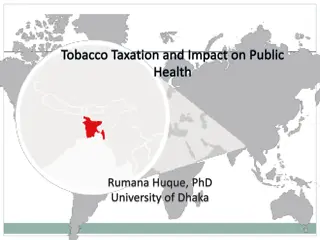
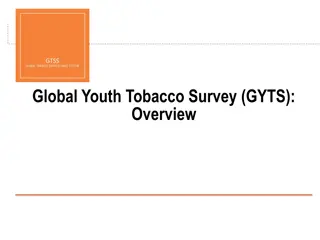
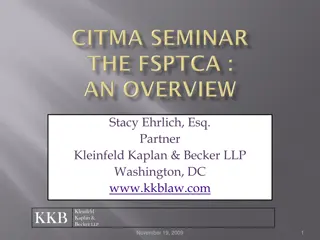
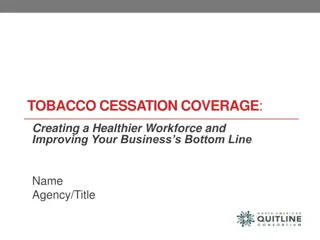
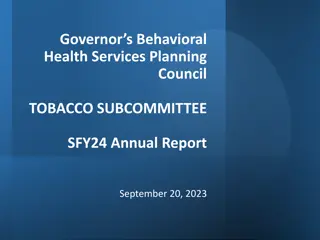
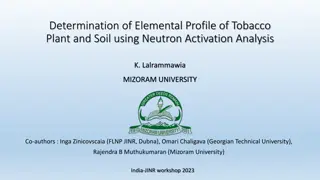
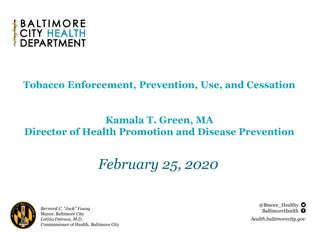
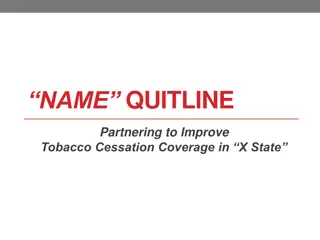
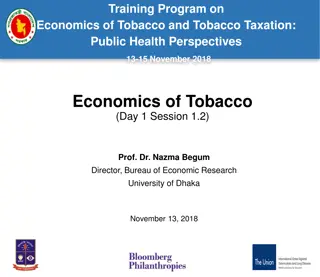

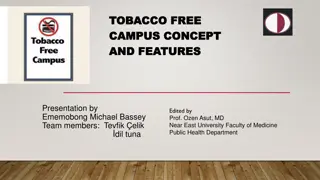
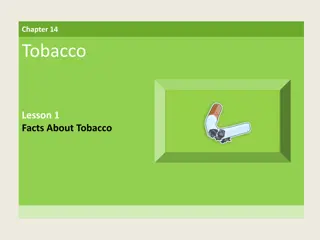
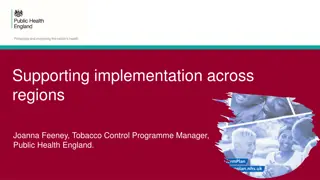
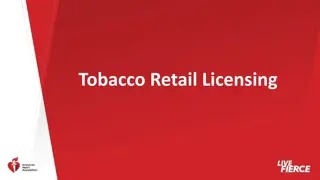
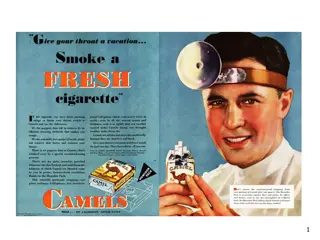
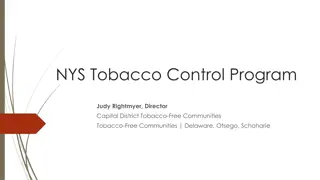
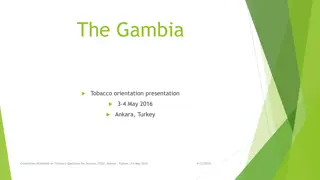
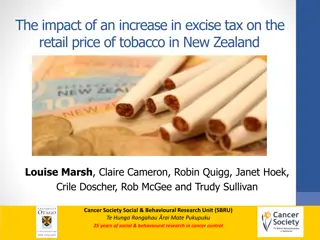
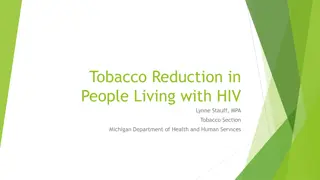
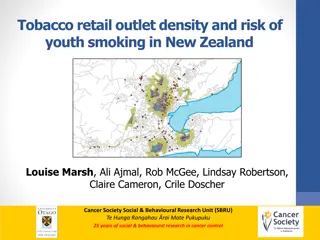
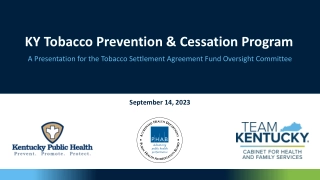
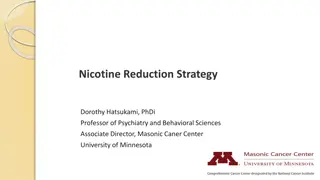
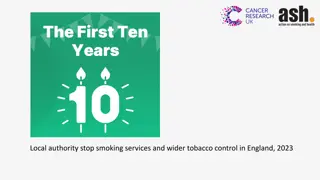
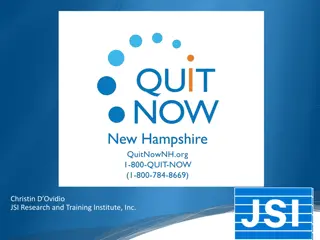
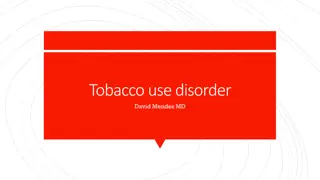
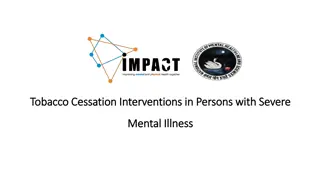
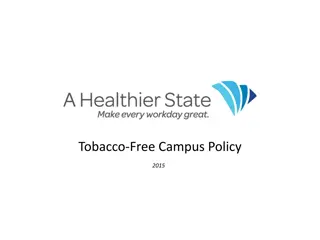
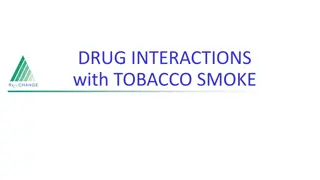
![Protecting Youth Through Tobacco Retail Licensing in [Your County]](/thumb/175307/protecting-youth-through-tobacco-retail-licensing-in-your-county.jpg)
